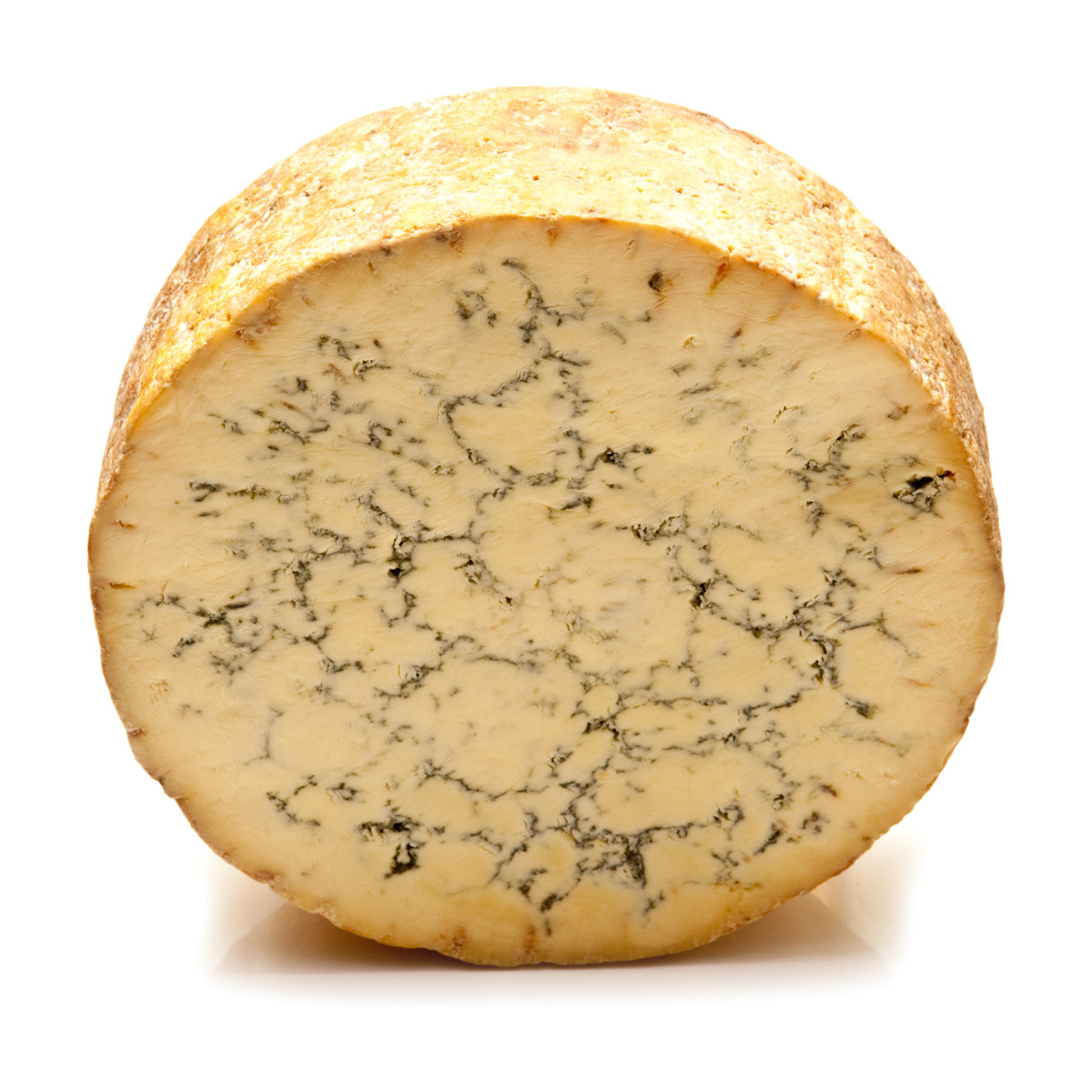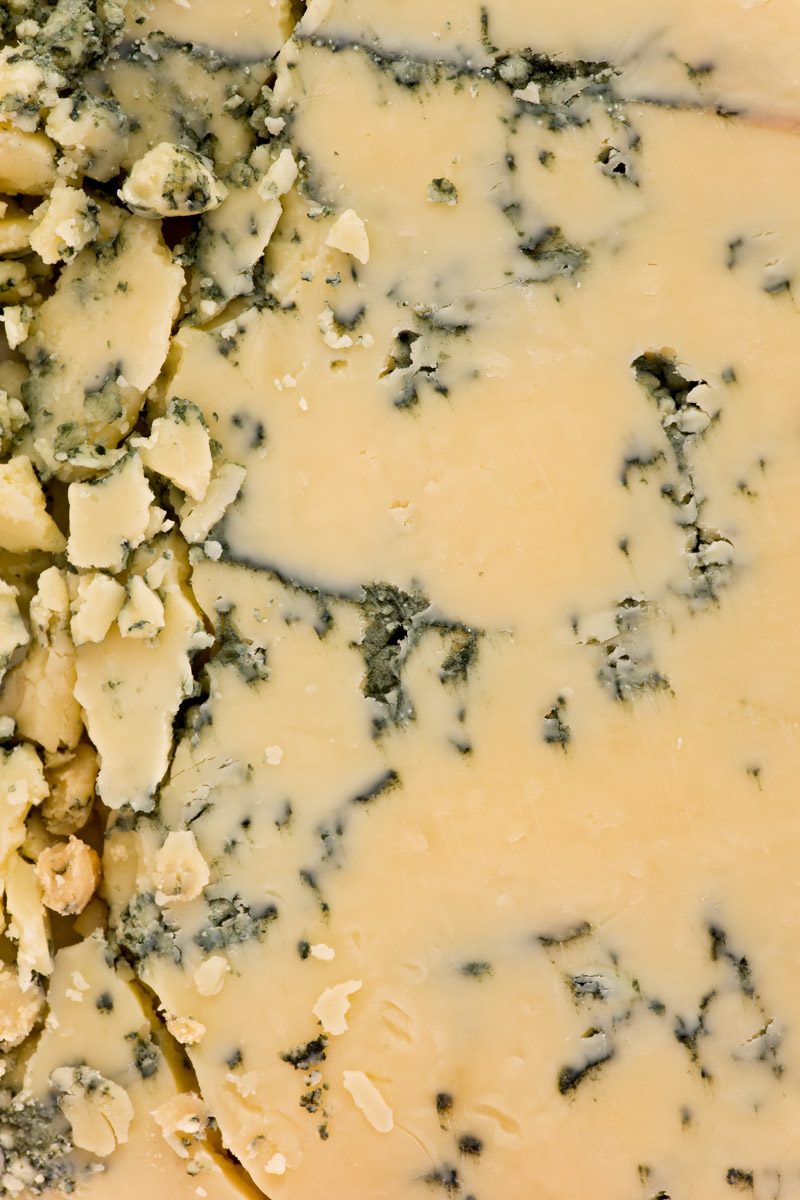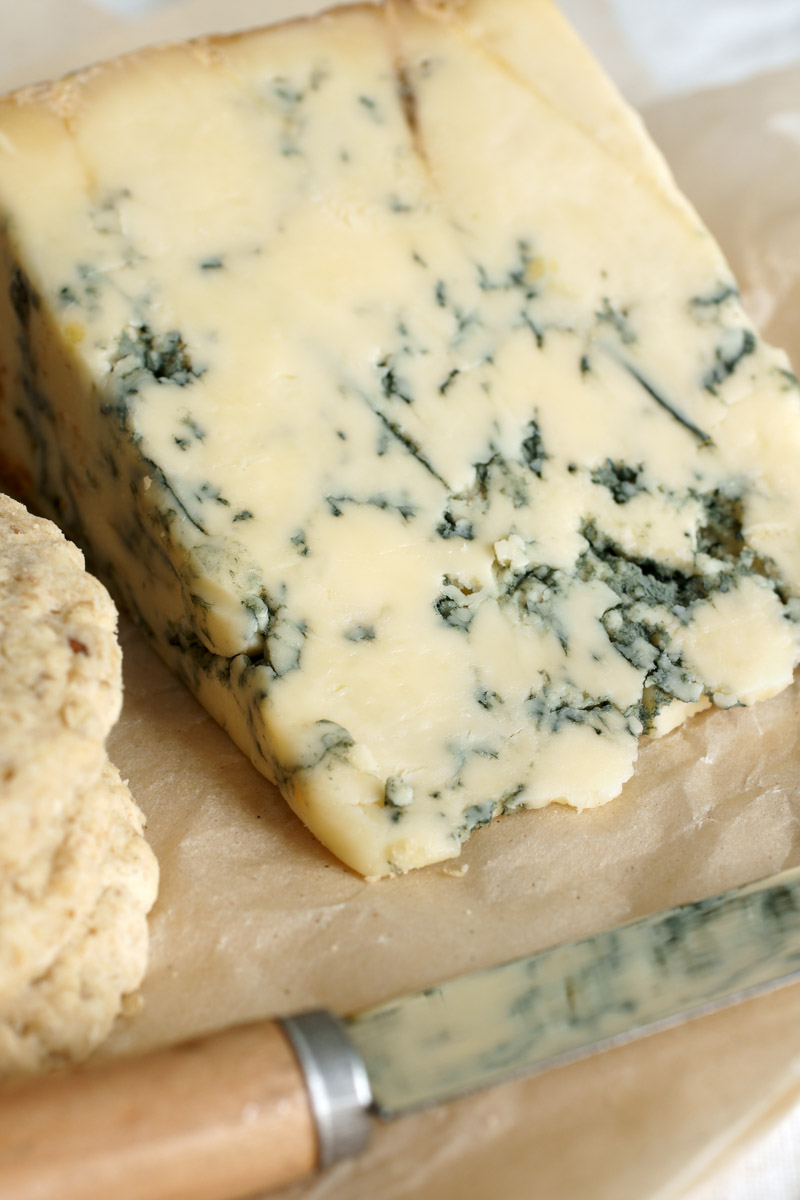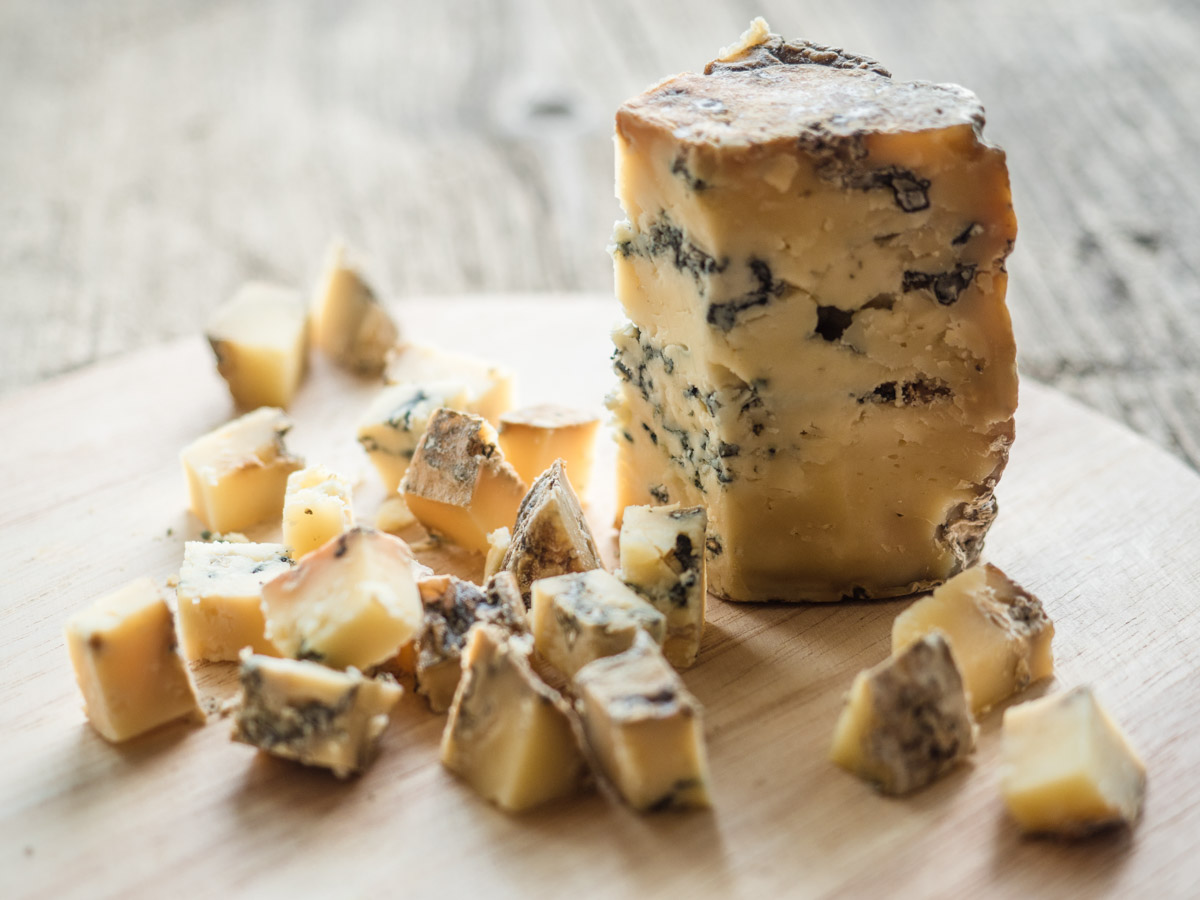Stilton Cheese
Britain's Beautiful Blue
By Thomas Jukes
Stilton Cheese is certainly distinctive in both taste and visual appearance, with a complex palate and a rich smooth texture easily identified by its iconic blue marbling running through the cheese. It has a long history within the British Isles with evidence suggesting it was first produced possibly in the late 17th Century but certainly by the early 18th Century.
Daniel Defoe, the famous writer of the novel Robinson Crusoe, commented on the village of Stilton in his ‘Tour through villages of England & Wales’ in 1724, calling the village, “famous for cheese” referring to the fabled cheese as being the “English Parmesan”. Some evidence does suggest that the cheese was never actually produced in the town and that the cheese was named after the village as its primary place of sale from the local pub, The Bell Inn. However, thanks to extensive research we now have the understanding that a cream cheese was being sold in the village of Stilton which was known at the time as Stilton Cheese. Articles posted by John Lawrence in 1726 give an idea that the cheese shared similarities to what is produced as Stilton today, he suggested that the perfect Stilton should be cylindrical with dimensions similar to modern-day production.
From recipes of the time Stilton appears to have been derived from a rich mix of whole milk and cream which was pressed and boiled, this may have set it apart from other cheeses of the period. It certainly gained a swift and envious reputation thanks in part to couching trade between London and Edinburgh passing through The Bell Inn. As the demand grew for the cheese the landlord of The Bell Inn, one Cooper Thornhill, began working with the renowned cheesemaker, Frances Pawlett from Wymondham in Leicestershire around 1743. Its reputation as the finest cheese in the land pushed production to develop across Leicestershire and Nottinghamshire. With still limited production, it began demanding a high price and so many inferior imitations were being produced. It wouldn’t be until 1910 that the original Stilton cheesemakers would found ‘The Stilton Cheesemakers Association’ and gain a trademark as well as a Product of Designated Origin. Only cheeses produced to the Stilton specification from the Vale of Belvoir, covering: Nottinghamshire, Leicestershire, and Derbyshire are allowed to carry the famous name.

© Edward Westmacott / #45926990 – stock.adobe.com".

© Raptorcaptor / #48114358 – stock.adobe.com”.
Today only five producers of Stilton remain in the UK and only two of these still use the traditional recipes, Cropwell Bishop and Colston Bassett. Fresh Peak District milk arrives daily at these producers where rennet and starter cultures are added along with the blue mold spores that will give the cheese its distinct taste. The set milk, or curd, is then broken down by hand and placed into cylindrical moulds called ‘hoops’. The cheese is then left for four days for the curd to drain, this helps to create the signature smooth texture. Cheesemakers then begin ‘rubbing up’ the cheese, removing the mould and smoothing the surface of the cheese, sealing the cylinder. The cheese then enters maturing rooms where it sits for a further five weeks to increase the richness of the final product. The mature cheese is pierced, this triggers the development of the blue mould spores that will spread throughout the block to give the blue-veined appearance. Each block of cheese is hand-inspected and graded on its; aroma, blue veining, and most importantly taste. The final product is a cheese with a full-bodied richness that is complimented by a smooth, creamy texture and an unmistakable tangy flavour from the blue veining.
Despite being a very rich cheese Stilton is highly versatile and can be enjoyed in all manner of ways. Its texture lends wonderfully to being crumbled over a salad or into your favourite soup. It can be easily frozen at home for up to 3 months allowing for the cheese to be grated or defrosted at your convenience for use in sandwiches or in everyday recipes. Try adding it to a serving of mashed potatoes to give a boost of flavour. Stilton makes a fine addition to any cheeseboard, working equally well served alone or on a selection of crackers, opt for the more savoury English Oatcake to really savour the creaminess of the cheese. When pairing with wine try to go with robust or sweet flavours, a full-bodied Shiraz works nicely, or go traditional with a sweet and weighty Port to add a nourishing warmth to the cheese. Likewise, an intense dark ale works beautifully with Stilton, a fine smooth stout with its own rich flavour will compliment the cheese exquisitely.

© David Pimborough /#304473619 – stock.adobe.com”.
Enjoy!

© Antonbelor / #271279123 – stock.adobe.com”.
